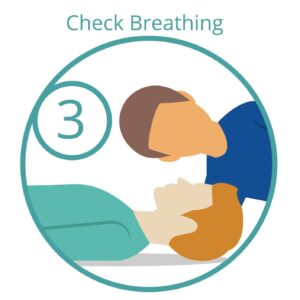
Cardiopulmonary Resuscitation (CPR) is a life-saving skill that can make all the difference during a medical emergency. It’s a procedure that anyone can learn, and in this article, we will guide you through the step-by-step process of CPR. Whether you’re a healthcare professional or a concerned bystander, knowing how to perform CPR can truly be a lifesaver. Every second counts in an emergency, so let’s get started with this comprehensive CPR procedure guide.
Introduction
Imagine being in a situation where someone suddenly collapses and stops breathing. It’s a terrifying scenario, but your knowledge of CPR can make a profound difference. CPR is a critical skill that involves chest compressions and rescue breaths to maintain blood flow and oxygenation to vital organs when the heart and breathing have stopped. In this article, we will delve into the nuances of CPR, from its significance to the proper technique.
Understanding CPR
What is CPR?
CPR, or Cardiopulmonary Resuscitation, is a lifesaving technique used when someone’s heartbeat or breathing has stopped. It involves chest compressions and rescue breaths to keep blood circulating and maintain oxygen levels. For a detailed introduction check out this article.
Why is CPR Important?
CPR is vital because it can keep oxygen flowing to the brain and other vital organs during a cardiac arrest, increasing the chances of survival until professional medical help arrives.
Steps to perform
Ensure Safety
Before approaching the victim, ensure the surroundings are safe for both you and the person in need.
Step 1: Call for Help
If there is no response, immediately call respective locations emergency number or ask someone nearby to call for professional medical assistance.

Step 2: Open the Airway
Carefully tilt the person’s head backward and lift the chin to open the airway. Look, listen, and feel for breathing.

Step 3: Check Responsiveness
Gently tap the person and shout, “Are you okay?” to see if they respond. Also, check if the person is breathing by taking your ear near to the person’s nose or by checking pulse.

Step 4: Rescue Breaths (if trained)
If you are trained in CPR and comfortable giving rescue breaths, after 30 chest compressions, give two rescue breaths. Ensure a good seal over the person’s mouth and pinch their nose shut. Give each breath over 1 second and watch for chest rise. Resume chest compressions immediately after each rescue breath.

Step 5: Start Chest Compressions
Place the heel of one hand on the center of the person’s chest (usually between the nipples). Place your other hand on top of the first hand, interlocking your fingers. Position your shoulders directly over your hands. Use your upper body weight to push down hard and fast, at least 2 inches deep at a rate of 100-120 compressions per minute. Continue these chest compressions until professional help arrives or the person starts breathing.

Step 6: Turn on side
Once you confirm that the person is unresponsive and not breathing normally, gently roll them onto their side. By gently rolling the person onto their side, you help to clear any potential blockages from the airway. This simple action allows for better airflow, making it easier for oxygen to reach the lungs and be circulated throughout the body during chest compressions.

Continue Until Help Arrives
Keep performing CPR until the person starts breathing, shows signs of life, or professional medical help arrives. If you get tired, switch with someone else if available, but minimize interruptions in chest compressions.
Remember that the key to effective CPR is to act quickly and maintain a steady rhythm. Don’t be afraid to take action if you witness someone in cardiac arrest. Your efforts can make a significant difference in saving a life.
Using an Automated External Defibrillator (AED)
If an AED is available, use it as soon as possible. Follow the device’s instructions carefully.
When to Stop CPR
Stop CPR if the person starts breathing, shows signs of life, or if medical professionals arrive and take control.
CPR for Infants and Children
Performing CPR on infants and children requires some modifications in technique. It’s crucial to be aware of these differences to provide effective care.
The Importance of CPR Training
While this guide provides valuable information, formal CPR training is highly recommended. Being properly trained increases your confidence and effectiveness during an emergency.
Real-Life CPR Success Stories
Discover inspiring stories of individuals who used CPR to save lives. These stories underscore the importance of knowing CPR.
Remember...
In emergencies, every second counts, and CPR can be the difference between life and death. By following this step-by-step guide, you’ve gained valuable knowledge that can help you act confidently when faced with a cardiac arrest situation.
FAQs
Q: How deep should chest compressions be during CPR? Chest compressions should be at least 2 inches deep. Q: Can anyone learn CPR? Yes, CPR training is available for anyone interested in learning this life-saving skill. Q: Should I perform CPR on someone who is breathing but unconscious? If someone is unconscious but breathing, monitor their condition closely and be prepared to start CPR if their breathing stops. Q: Is it possible to break ribs while performing CPR? Yes, it is possible to break ribs while performing CPR, but it is more important to focus on effective chest compressions. Q: What should I do if an AED is available at the scene? Use the AED as directed by the device’s instructions. It can greatly improve the chances of survival. |

Pingback: Saving Lives Made Simple: Understanding CPR -